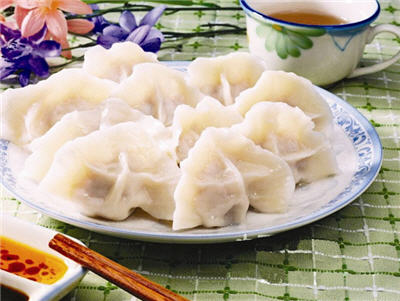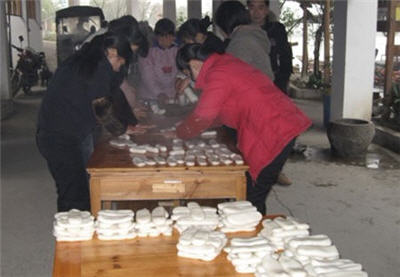In China, the lunar calendar divides the year into 24 solar terms. The solar terms were created thousands of years ago to guide agricultural production and function even now.
The 22nd solar term of the year is Winter Solstice (Chinese: Dong Zhi), which begins on begins on Dec 22, 2014 and ends on Jan 6, 2015. On the first day of Winter Solstice, the Northern Hemisphere experiences the shortest day and the longest night in the year. From then on, the days become longer and the nights become shorter. The Winter Solstice also marks the arrival of the coldest season in the year.
Here are some things you should know about Winter Solstice.
Winter Solstice Festival
The Winter Solstice became a festival during the Han Dynasty (206 BC-220 AD) and thrived in the Tang and Song dynasties (618-1279). The Han people regarded Winter Solstice as a "Winter Festival", so officials would organize celebrating activities. On this day, both officials and common people would have a rest. Relatives and friends presented to each other delicious food. In the Tang and Song dynasties, the Winter Solstice was a day to offer scarifies to Heaven and ancestors. Emperors would go to suburbs to worship the Heaven; while common people offered sacrifices to their deceased parents or other relatives. The Qing Dynasty (1644-1911) even had the record that "Winter Solstice is as formal as the Spring Festival," showing the great importance attached to this day.
Eating dumplings and Tangyuan
During Winter Solstice in North China, eating dumplings is an essential thing to do. There is a saying that goes "Have dumplings on the first day of Winter Solstice and noodles on the first day of Summer Solstice." And in the South China, people prefer eating Tangyuan, also called Glutinous Rice Dumplings or Sweet Rice Dumplings.

Eating nuts
When midwinter comes, vital movement begins to decline and calm down. In this period, eating an appropriate amount of nuts, such as peanuts, walnuts, chestnuts, hazelnuts and almonds, is good for one's body. Traditional Chinese medical science teaches that the quality of a nut is tepidity and most nuts have the function of nourishing the kidneys and strengthening the brain and heart.
Eating mutton and vermicelli soup
In Yinchuan, Ningxia Hui autonomous region, people call midwinter the "Ghost Festival". On that day, it is customary for people there to drink mutton and vermicelli soup and eat the dumplings in the soup. They give the midwinter soup a strange name: "brain" and share it with their neighbors.
Eating rice cakes
During the Winter Solstice, Hangzhou residents traditionally eat rice cakes. In the past, before the approach of the winter solstice, every household would make the cakes to worship their ancestors or use as gifts for relatives and friends. Today, though fewer families eat home-made cakes, people there still buy rice cakes for the Winter Solstice Festival.

Offering nine-layer cakes to ancestors
Taiwan residents keep the custom of offering nine-layer cakes to their ancestors. People with the same surname or family clan gather at their ancestral temples to worship their ancestors in order of their ages. After the sacrificial ceremony, there is always a grand banquet.
Eating red-bean and glutinous rice
In some regions south of the Yangtze River on the first day of Winter Solstice, the whole family gets together to have a meal made of red-bean and glutinous rice to drive away ghosts and other evil things.
